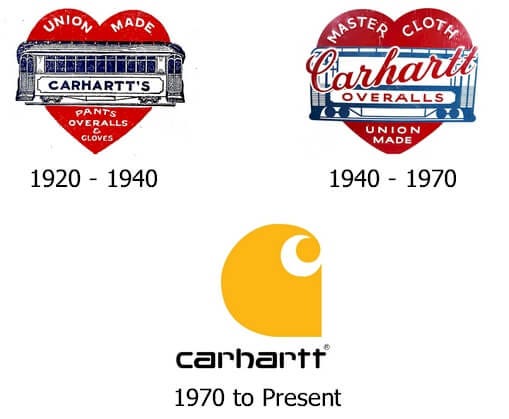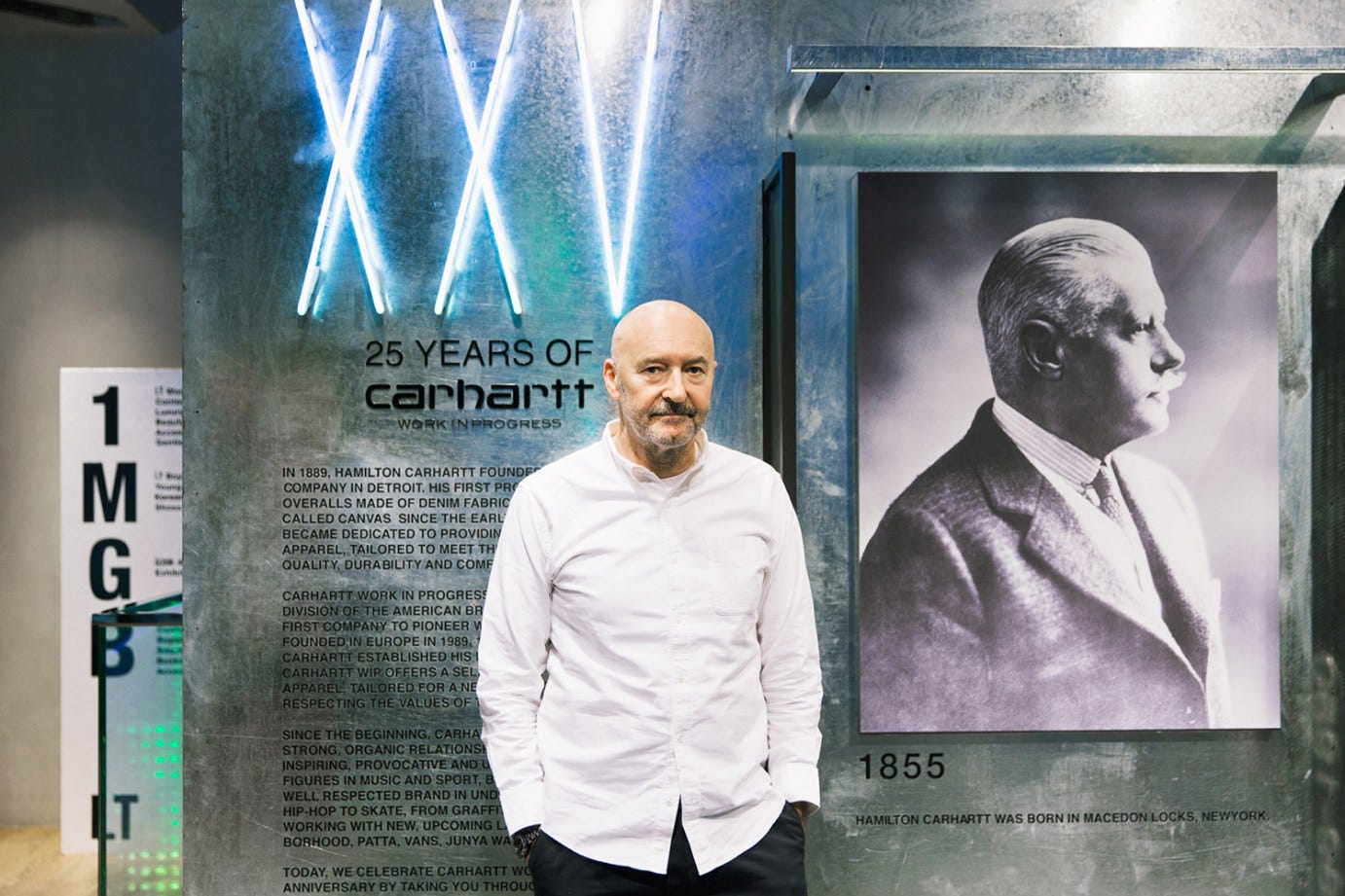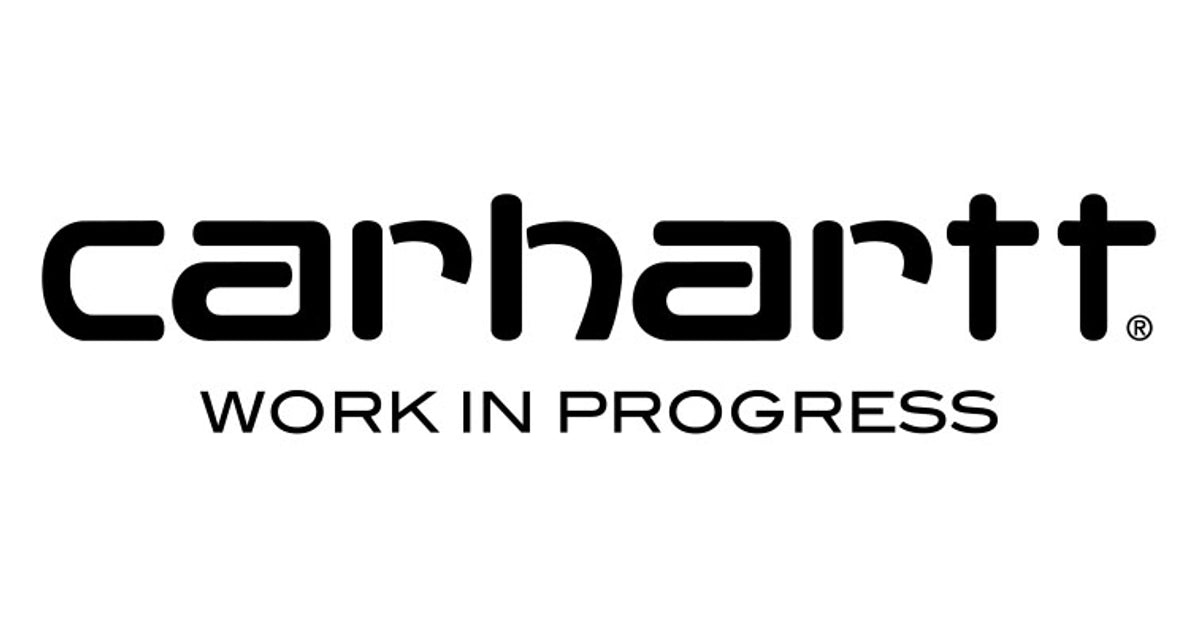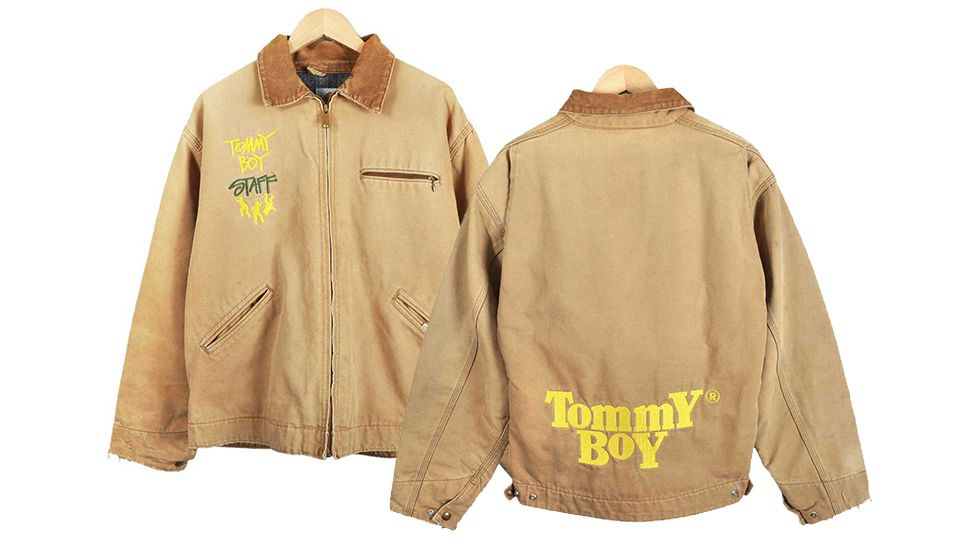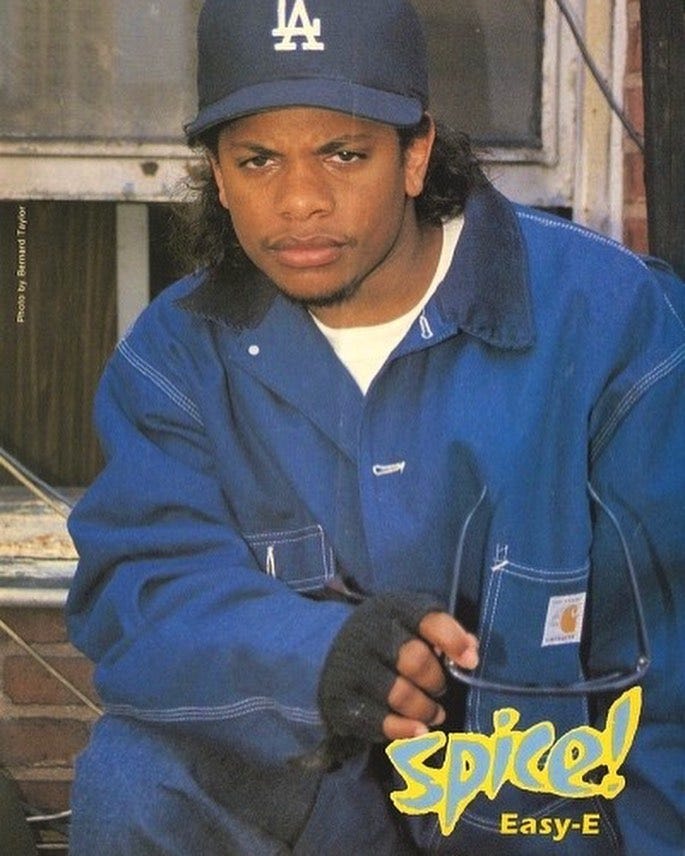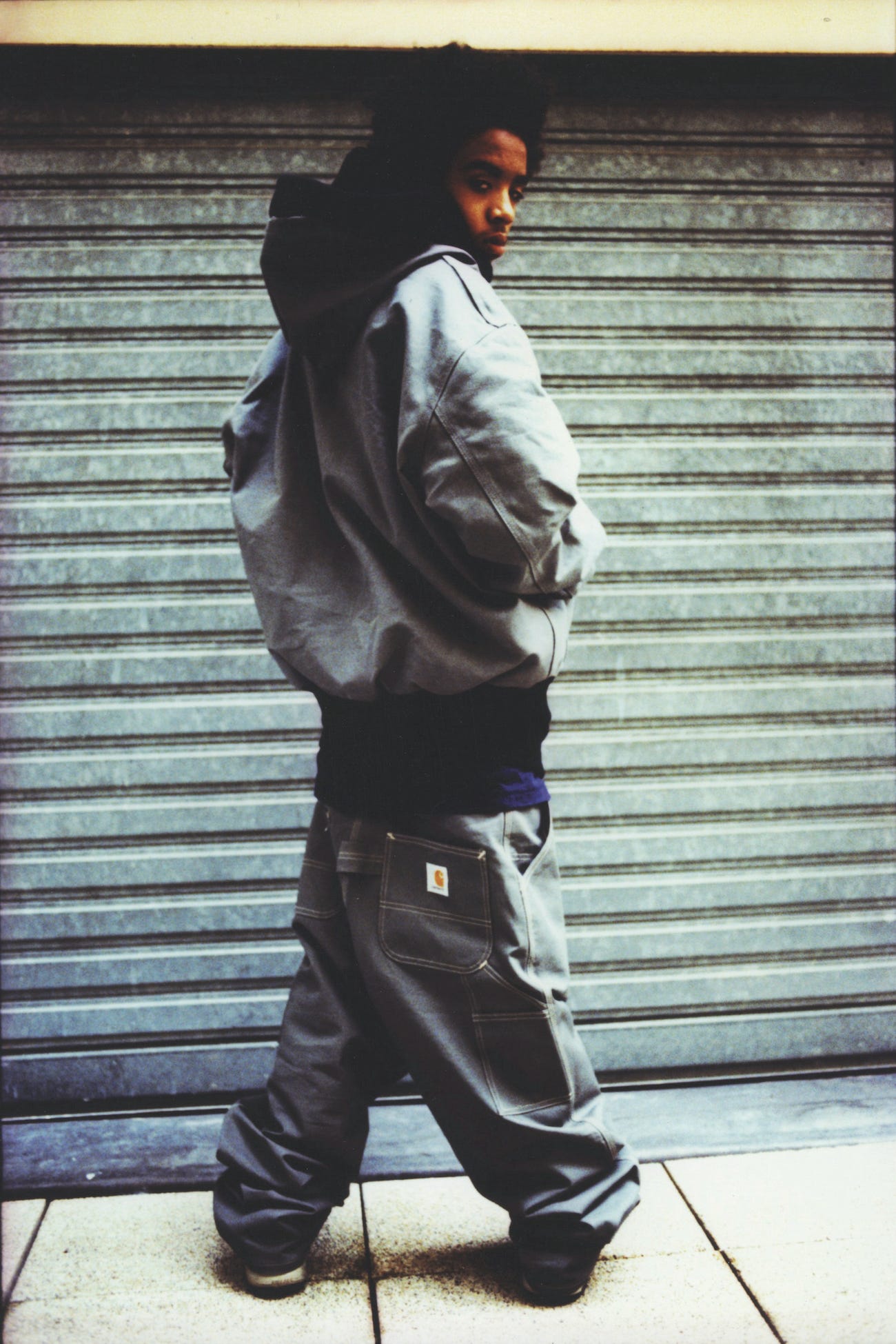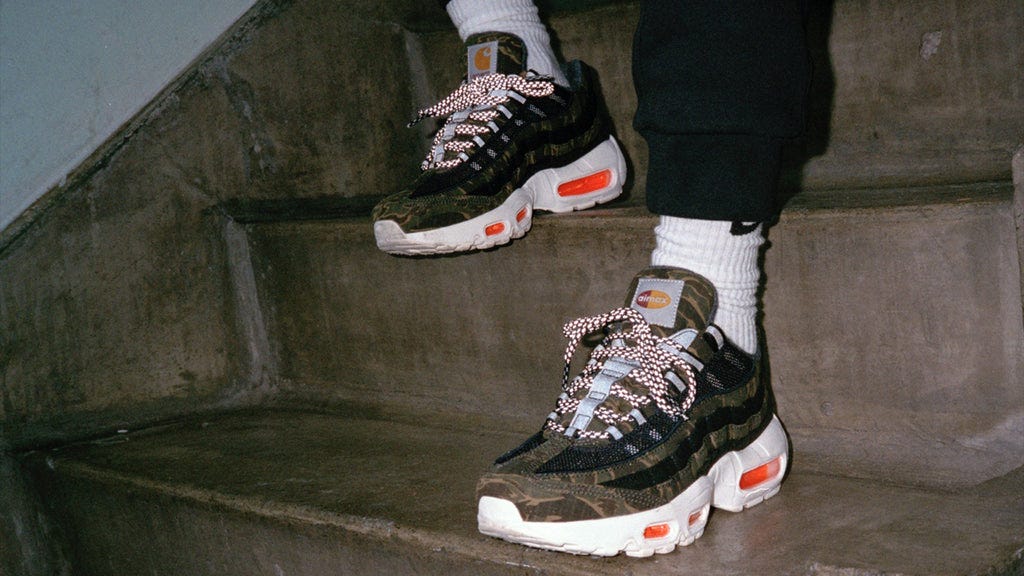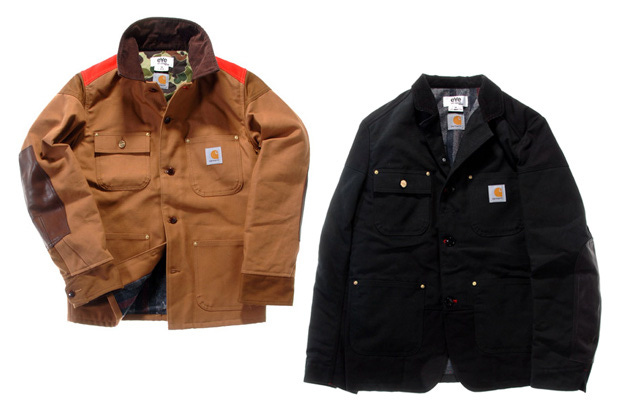There’s no shortage of apparel brands in the world, but a few stand the test of time.
Some stick around because of nostalgia, others because their classic vibes transcend generational divides (i.e. Chuck Taylor).
One brand has uniquely permeated the world of streetwear. They've opened flagship store after flagship store, and their clothing is worn by blue-collar workers and hypebeasts alike.
They make practical, durable clothing with an added cool factor.
The brand that I’m referencing is none other than…
Carhartt.
Carhartt has always enjoyed some acclaim throughout its history. But since the 80s, it has enjoyed a meteoric rise in popularity.
And look, popularity happens for different reasons. For some, it's because Carhartt is as American as it gets.
For others, it was a brand that recently caught on, and it’s worn by some of their favorite rappers.
In general, you’ll see people opting for the classic heavyweight pocket tee, a Carhartt beanie, or a jacket when it gets cold. So, with that in mind, let’s talk about Carhartt and it’s deep relationship with Hip-hop culture.
Y’all know the vibes… Let’s get it.
IN 1889…
Hamilton Carhartt founded “Carhartt” in his hometown of Dearborn, Michigan.
He initially founded the company with the intent to produce overalls in duck and denim fabrics designed to be strong and durable for railroad workers.
However, over time, Carhartt expanded its line to include other kinds of work apparel such as jackets, trousers, and accessories, all aimed at providing dependable, quality workwear for manual labor industries.
Carhartt's beliefs carried over the visual ID of the brand, and as the Carhartt site says, it was a reflection of the promise to the workers of the world that they stood for them, and wanted them to have quality clothing.
IT BECAME POPULAR IN THE 80S
"They needed to keep warm and they needed to carry a lot of stuff… Then the kids saw these guys on the street, and it became the hip thing to wear."
- Steven J. Rapiel, NYC salesman for Carhartt.
Carhartt’s reputation for workwear had been solidified because of what it had done for blue-collar workers since the early 1900s, but no one could’ve predicted what would happen next.
According to the New York Times, the affinity for Carhartt as a streetwear brand grew because of street hustlers.
New York Winters were pretty harsh, and hustlers needed something warm & roomy to wear while on the corner. Naturally the youth (and the rap stars who rapped about the life) caught on, and Carhartt began shifting from workwear to everyday-wear.
Around the same time as the affinity for Carhartt in the U.S. was skyrocketing because of HIp-hop, it’s popularity was also taking form overseas.
IT STARTED WHEN A SWISS DESIGNER VISITED A LOCAL FLEA MARKET…
In 1989, Edwin Faeh, an accomplished designer specializing in denim was roaming around Paris.
One afternoon, he visited a local a flea market where he ran across Carhartt’s signature denim.
He instantly became a fan of its quality, and decided learn more about the Carhartt brand.
In the process, he started selling custom Carhartt pieces across Europe.
However, Faeh’s love of Carhartt came with some controversy.
The thing is, Carhartt was squarely a U.S. based brand.
Faeh was selling their products overseas and he was doing so illegally, much to the chagrin of the U.S. Carhartt big wigs.
However, that quickly changed.
Although Faeh was initially bootlegging Carhartt, the strength of his sales overseas led to a realization of how popular Carhartt could be in Europe (with the right permissions, of course).
Seeing the potential benefit of expanding, the Carhartt team in the U.S. granted him and his partner Salomée Faeh an exclusive license sell Carhartt.
They were the only authorized Carhartt retailer in all of Europe, and in 1994 they used that license to create his own division named:
CARHARTT WIP [WORK IN PROGRESS].
Carhartt WIP began to represent a blend of Carhartt’s flagship workwear along with the budding streetwear movement that was happening in the U.S.
In short, where Carhartt was primarily focused on the workwear aesthetic, WIP added a cool factor.
WIP tapped into skate culture, streetwear, and music culture to create something unique that began to spread culturally throughout Europe.
Because of that, it should be noted that Carhartt WIP is technically different than Carhartt. They use some of the same materials, but it’s more expensive & tailored towards a different consumer.
On top of that, many of the most popular OG Carhartt pieces were brought back to life through WIP and some of the rappers responsible for its rise have been featured in different seasonal campaigns and collaborations.
MOVING INTO THE 90S…
AS Carhartt began its ascent as a mainstay in streetwear, a new independent record label named Tommy Boy hit the scene.
In a stroke of genius, the labels founder Tommy Matola bought 800 Carhartt jackets, customized them with the Tommy Boy logo and gave them away to people in the music industry deemed as “tastemakers and influencers” to help spread the popularity of the brand and the label.
This move by Matola further planted the seed that Carhartt was a legit
STREETWEAR BRAND.
If that wasn’t enough, Matola’s group House of Pain wore the branded Tommy Boy Carhartt jackets in the video for their hit single “Jump Around” which further increased interest around the brand with Hip-Hop fans.
**Sidenote: If you’ve ever played Tony Hawk Pro Skater 2 then you recognize Jump Around from the soundtrack.
On the West Coast, Carhartt’s popularity was powered by Hip-hop stars as well.
The general “look” consisted of Jean Jackets and Dickies, much like the look Pac is sporting on the cover of this article, and what Eazy E is rocking below.
On the east coast the fit was just as baggy, but the jacket were different. — more in line with the duck jackets popularized in the 80s. Groups like Wu-Tang helped make the brand popular — peep below for a picture of Shyheim (courtesy of the Carhartt WIP archives)
MOVING INTO THE 2010S….
According to Business Insider, a huge part of Carhartt’s success is likely due to a singular event In 2011: The opening of the first Carhartt WIP flagship store in NYC.
As the modern streetwear movement grew, Carhartt kept its relevance strong. And with a flagship store in one of fashion’s meccas, they were bound to see a surge in popularity.
This all goes without mentioning that many of the rappers in 2010s were kids of the 90s meaning that they saw Pac, Wu-Tang wearing Carhartt and incorporated the brand into their style.
That said, Let’s Talk About The Collabs…
Here are just a few of the collabs that Carhartt has done:
I. AwakeNY
One of Carhartt’s most recent collabs is with NYC fashion brand AwakeNY.
For the campaign they reached out icons like Rakim to sport pieces from their Spring 2023 collection (seen below)
II. Nike
In 2018, Carhartt dove deeper into youth culture via a partnership with Nike.
The line included a new Air Force Ones, Air Maxes, and Vandals — all of which fetch high prices on the resell market.
**It’s rumored that the two will work together again via a Nike SB collab slated to drop this year… allegedly.
III. Junya Watanabe
The same year as the Nike Collab, WIP partnered with designer Junya Watanabe on the first of many collections.
The line included co-branded jackets, t-shirts & pants — all featuring the signature Carhartt Style with the flair of high fashion.
IV. Air Jordan x Eminem
Having carved out a lane in streetwear, Carhartt leaned further into their HIp-hop roots, and more specifically their Detroit ones, by collaborating with Eminem on a special pair of Air Jordan 4’s in 2017
WHAT NOW?
Carhartt’s relationship with Hip-hop is still going strong.
Although the branding on their instagram still leans heavily into the workwear space you can see splashes of Hip-hop mixed into their feed.
You can still see artists like Action Bronson and Asap Rocky rock their apparell and they’ve got a ton of collabs on the way.
Not gonna lie, the shirts are definitely durable. And with Fall right around the corner, I see a WIP jacket in my future.
Peace.







